Here is a Layers crash course for you. Layers were introduced in Photoshop 3.0. This totally revolutionized Photoshop. For the first time you could do complex compositions easily without having to be a channels guru. I remember before layers, if a client wanted to make changes to a composition, or even change a font you were in big trouble. This article will teach you what layers are and what all the part in the Layers panel do.
There is a lot to layers and they will take some time to master. But they are not that difficult once you understand how they work. In this tutorial I will explain the concept of layers, describe the features and walk you through a simple tutorial. Along the way I will throw in a few cool tips to help you work faster and easier.
We have tutorials here to get your hands dirty, learn how to composite and collage in Photoshop Layers
Part 1. What is a Layer?
A layer is simply one image stacked on top of another. Imagine I have a piece of paper and I paint it red. Then I take a peice of clear celophaine and paint a yellow circle, and lay it over the paper. Now I take another peice of cellophane and paint some blue type and laythat on top of the yellow circle. I now have a background (red) and 2 layers (yellow and blue.) Just like in the picture below.
A background with 2 layers.
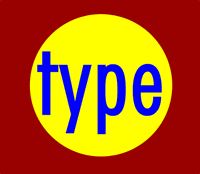
This is how your image with would look on the screen or when printed.
Broken apart so you can see how the layers work
Each layer stacks on top of the previous one.
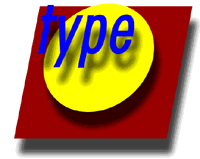
That is it! The concept of layers is that simple. Photoshop uses the Layers Pallete to allow you to do this with your images. More than one layer is called a composition.
Layers Panel
Photoshops layers Panel is a powerful tool that allows you do many special things to your layed compositions. Next we will look at the Photoshop layers pallete.
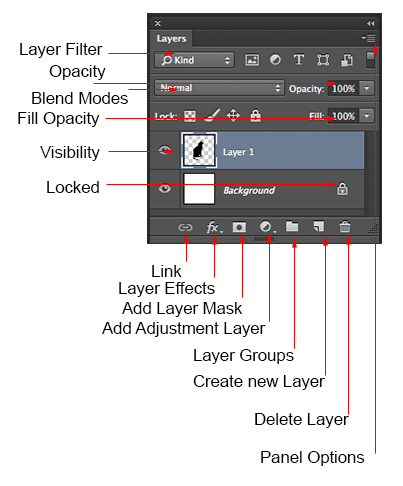
Have you ever wondered what all the parts of a layers panel do? Here is a screen grab of the layers Panel. Ill explian what all the parts are here.
Layer Filter: This enables you to hide layers based on different things. Makes it easier to find the layers that you want to work with.
Opacity: 0= transparant 100 = fully opaque. press number keys on keyboard to instantly set to multiples of 10, or adjust the slider for an exact amount of transparency on each layer.
Blend Modes: Change these to change the way that the selected layer blends with the layers underneath it. Great for compositing and special effects. (With the move tool selected, press Shift+ or Shift- to cycle through blending modes.
Fill opacity: Adjusts the amount of opacity of the pixels only, but any layer styles are uneffected and remain 100% opaque.
visibility: If the eye is showing that layer is visible. Click on the eye and the layer will still be there but invisible until you click on the eye again.
Locked: The padlock means that something is locked in the layer. (Also click in the 4 icons in the lock next to fill opacity to make certain things editable of locked). Here are the different things that can be locked/unlocked.
Lock all: If the box is checked the layer is totally protected from any editing.
Lock Position: You can make any changes except for moving the image.
Lock Image pixels: You cannot draw on this layer if checked.
Lock transparent: You can paint on this layer but not where it is transparent.
Useful tools at the bottom of the panel
Link: Enabled you to link layers. These will all move together unless unlinked.
Layer Effects (Styles): Special effects applied to your image layer. Noted by the little f. Each effect will be listed. multiple effects may be used at once.
Add Layer Mask: This is the button to press to add a layer mask to the currently selected layer. Allows you to paint away parts of your layer without damaging your original image.
Add Adjustment Layer: The best way to apply image adjustments. There can change the color or tone of an image. All layers are affected underneath an adjustment layer (Unless clipped). This is a good option to using Image>Adjustments because adjustment layers are non-destructive and re editable.
Layer Groups: A good organizational tool. This puts layers into a folder. You can choose multiple layers and press Cmd/Ctrl+G to put them in a group, or create a group by clicking this icon. Layers can be dragged in or out of groups in the Layers panel.
Create New Layer: Press this icon to create a new layer. Drag an existing layer into this icon to create a duplicate of that layer,
Delete Layer: Drag a layer into this icon to remove it. Or select the layer and then press this icon to get the same result.
Panel Options: This will open a drop down menu that provides a number of options, many that arent listed anywhere else.
Types of Layers
In Photoshop there are a number of different types of layers. They are usually indicated by icons, here is what they all do.
Thumbnail: A small picture of the layers contents.
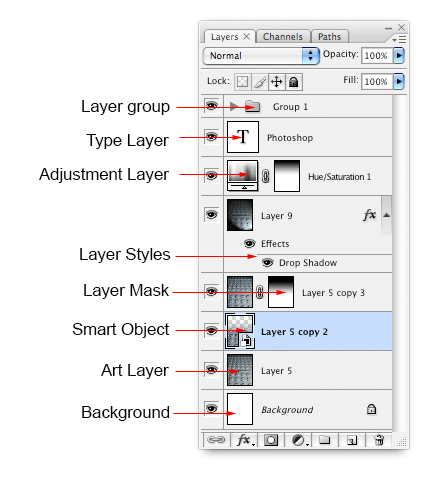
Layer Group: This puts layers into a folder. Layers can be dragged in or out of groups in the Layers panel.
Type Layer: The same as an image layer, except this layer contains type that can be edited; (Change character, color, font or size)
Adjustment Layer: An adjustment layer is changing the color or tone of all the layers underneath it. To only affect th layer directly underneath it (an ignore the other underlying layers): Move your pointer on the line between the adjustment layer and the layer directly beneath it, hold down Alt/Option. You will see a symbol appear. Click to limit the adjustment. (clip to layer) do the same thing again to toggle this option off.
Layer Style: An effect has been applied. Click the eye to turn it on or off. Double click effects to open the Layer Styles options.
Layer Mask: Allows you to paint on the mask to show and reveal portions of the image.
Smart Object: A special type of layer that is actually a container that can hold; multiple (or 1) layers, vectors for illustrator, raw files, video, 3D or many other types of objects. To learn about Smart Objects in depth, check out this video,
Art Layer: a regular layer
Background: Always locked, cannot be moved or have layer effects applied to it. The little icon of the padlock on the right, indicates it is locked. Can be changed into a regular layer by simply double clicking on the thumbnail.
Special Types of Layers
There are two different types of layers that have appeared in newer version of Photoshop. These used to only be in Photoshop Extended. With Photoshop CC, there is no longer a seperate Extended version, all the features are now inluded with every copy of photoshop.
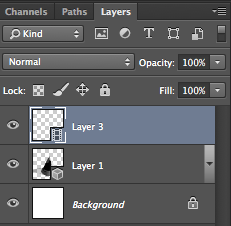
Video Layer: This indicates that there is video on this layer. Photoshop is now able to be used as a video editor, to worki with video, animated slideshows and motion graphics. See Video in Photoshop if you want to learn about video editing in Photoshop.
3D Layer: Photoshop is capable of importing and working with 3D objects. It also has the ability to do 3D printing.
Layer Tips:
Here are some useful tips for working with Photoshop Layers:
Click to select a layer
Cmd/Ctrl+click to select multiple layers
Drag your curser through the eye incons to turn the visibility on or off on multiple layers
Cmd/Ctrl+ J to copy a layer
Cmd/Ctrl+ J to copy a selection to a new layer
Cmd/Ctrl+Shift + J to Move a selection to a new layer
Click the padlock icon on the background to convert it to a regular layer
Press Cmd/Ctrl+G to Move all the selected layers into a new group
Cmd+Option+Shift+E (Ctrl+Alt+Shift+E windows) to create a new merged layer above all the other layers
Hold Option/Alt while adding a mask to create an inverted layer mask
You can drag elements from the layers panel into other documents
Hold down Option/Alt and click the pane between two layers to clip the contents of the top layer into the transparencey of the layer underneath it
Choose the move tool V key Press Shift + + to cycle through all the blending modes. Shift + - to cycle in reverse.
Ill see if I have time to keep adding to this list. If you like this kinds of tips, subscribe to our newsletter for more.
This has shown you the concepts of layers.
Are you ready to begin actually using layers? Ok Lets go!
Check out the video training that includes Layers, Channels and Masks, Route CS6
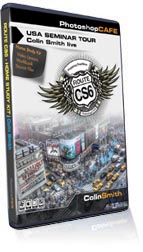
Get in-the-know!
Join our list to receive more tutorials and tips on Photoshop. Get exclusive tutorials, discounts and the free super guides. No spam, all content, no more than once a week.
Adobe Photoshop Layers explained
Basic layer structure in Photohop and how they work. All the different features in the Layers panel explained. Layers are very important to learn in photoshop.
Layers panel explained | Learn Photoshop CC | Adobe TV
Learn the basics of the Layer Panel with author Andy Anderson. Learn more from the complete Adobe Photoshop CC course at Infiniteskills.com.
Layer Masks Explained - Adobe Photoshop Elements Tutorials ...
Layer Masks are a great feature in Photoshop Elements, but can be hard to understand at first. Here is a clear explanation for beginners.
Adobe Photoshop CS6 Layers explained - Robert Mackin ...
Layers . Generally the first point in your Photoshop workflow is to make a copy of your background layer or image. This is an important point as it will allow you to
Use layers to build images | Adobe Photoshop CC tutorials
Learn how to use layers to create designs, fix photos, or build collages.
Photoshop Element Layers Explained, - Robert Mackin ...
Adobe Photoshop Elements Layers Explained What exactly are layers? In Photoshop Elements images exist as a layer or multiple layers. Each layer can contain different
Layers Adobe Photoshop CS CS2 CS3 CS4 CS5 CS6
Layers And The Layers Palette - Explained In Detail Blending Modes Fully Explained Here! Suitable for Adobe Photoshop Skill Level - Beginners Plus
Photoshop Layers Tutorials
Learn all about layers in Photoshop with our complete collection of Photoshop Layers tutorials, covering layers, the Layers panel, layer masks, and more! Perfect for
Photoshop School: PHOTOSHOP LAYERS EXPLAINED, HOW-TO, TIPS ...
One of the biggest misunderstood feature in Photoshop is layers. It can appear very complicated but once it is explained, you will see that it is not very
Understanding Layers in Photoshop - Digital Photography School
This post on Understanding Layers in Photoshop has been submitted by Jodi Friedman of MCP Actions. MCP Actions offers customized one on one photoshop training
ConversionConversion EmoticonEmoticon